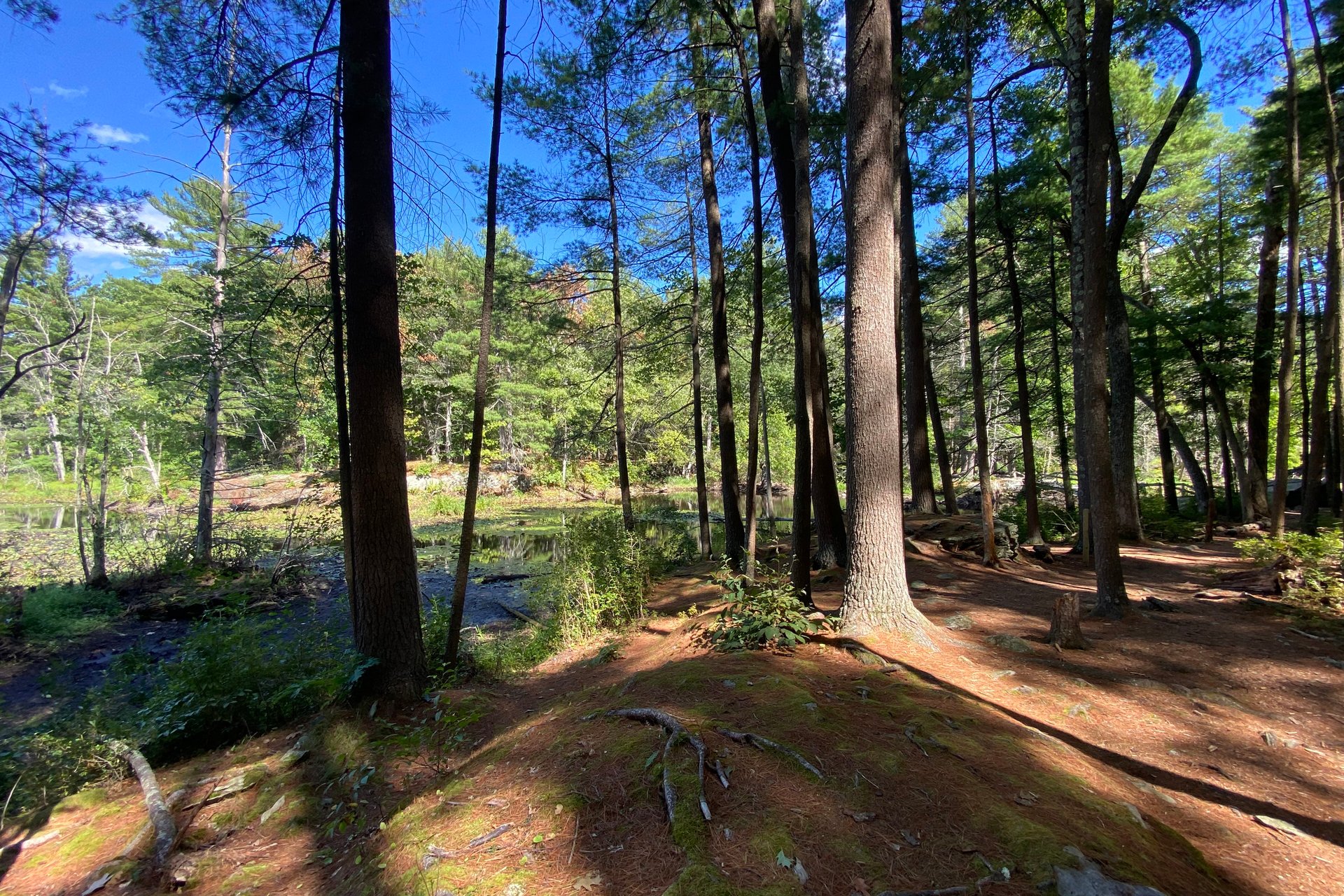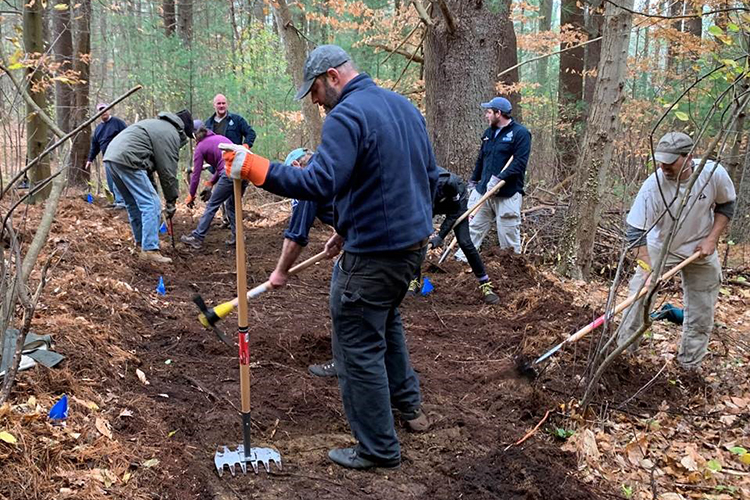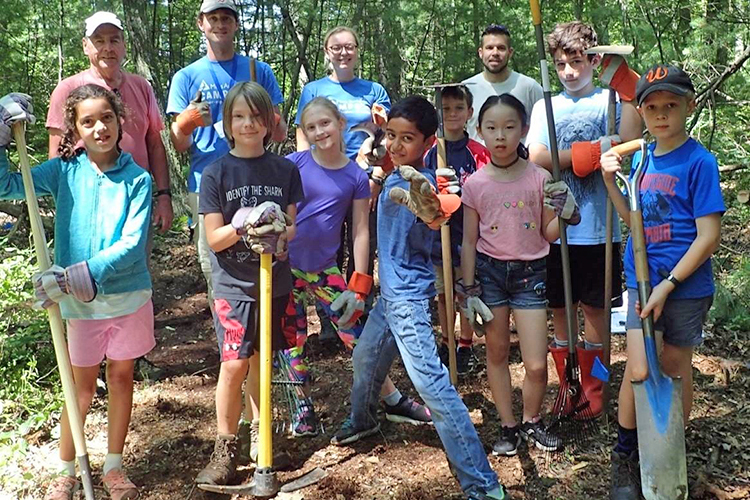Have you ever walked on a trail and wondered how it was made? Why it curves a little to the right? How it manages to avoid being washed out when a rainstorm comes? Or how it brings you to that perfect spot to take in a spectacular view?
Sustainable and accessible trails don't just happen. They take a tremendous amount of assessment, planning, and labor to design, implement, and maintain, and they must continue to be sustainable through years of extreme weather events and heavy use.
Every time you enjoy a trail at a Mass Audubon wildlife sanctuary, you are seeing firsthand the work of our amazing team of trail builders who aim to create opportunities to experience nature in a fun, safe, and ecologically friendly way. And a recent project to overhaul the 9-mile, well-loved trail system at Broadmoor Wildlife Sanctuary in Natick and Sherborn offers a perfect case study in trail-building.
Sustainable Trail Makeover
Many existing trails at Broadmoor were built for utility and originated as cart paths. At one time, two mills were powered by Indian Brook, which runs through Broadmoor. A connecting trail between what is now Route 16 (Eliot Street) and South Street allowed carts or sleds to carry logs to a sawmill and corn to a gristmill, in season.
Carts and sleds were replaced by sneakers and hiking boots when Broadmoor became a wildlife sanctuary in the 1960s. After decades of heavy visitation, the trails felt the impact. Years of use compacted the surface and built up the edges, creating channels for water where erosion continually wears away the tread, exposing loose rock and making an irregular surface that is difficult to walk on safely.
Extreme rainfall events attributed to climate change accelerate this erosion by delivering large quantities of water in short time periods. Warmer winters freeze and thaw trail surfaces, creating damaging frost heaves along with icy spots that are hard to navigate for winter visitors.
To better understand the effect erosion and people have on the trail system, the sanctuary embarked on a professional trail assessment. This 360° view looks at the age of a trail, current conditions, uses, and destructive forces such as erosion from water or foot traffic. Another major consideration is the impact the trail has on its natural environment. Trails can be designed (or redesigned) to preserve large areas of habitat, minimize fragmentation, avoid disturbance to wildlife, and protect wetlands and other sensitive areas, contributing to biodiversity and resilience.
Once the trail assessment was complete, the project team embarked on funding, permitting, and implementation. Since wetlands are a major element of the Broadmoor landscape and water needs to be considered in trail construction or relocation, wetland permitting by the local conservation commissions was needed for most elements of the trail program.
People Power
Although contractors may be needed for complex projects such as bridges or major stonework, at Broadmoor the property staff, dedicated volunteers, and even summer campers helped improve many sections of trail, including building new trails and boardwalks, regrading existing trails, and revegetating abandoned trail sections.
A great example is the beloved trail that loops down to the Charles River. The original trail followed a steep, direct route to the river and then followed its edge for nearly half a mile. Over time, the pathway eroded, turning to gravel on the steep sections and mud near the river.
The relocated trail was designed to bring walkers down to the river gradually with enticing views and great birding sites along the way, then follow the river’s edge higher on the bank, offering better views and a safer, more comfortable treadway. The material excavated from the new route was placed over the old route, introducing seeds, roots, and plants that rapidly revegetated the bare earth.
Beyond Broadmoor
The team behind the Broadmoor project has been sharing what they learned through this process, not only with Mass Audubon staff, but with other nonprofits and land trusts. And we're building even more trails across our sanctuary system, creating greater access to nature for everyone.
Find volunteer opportunities to help maintain and improve our trails and wildlife sanctuaries.





